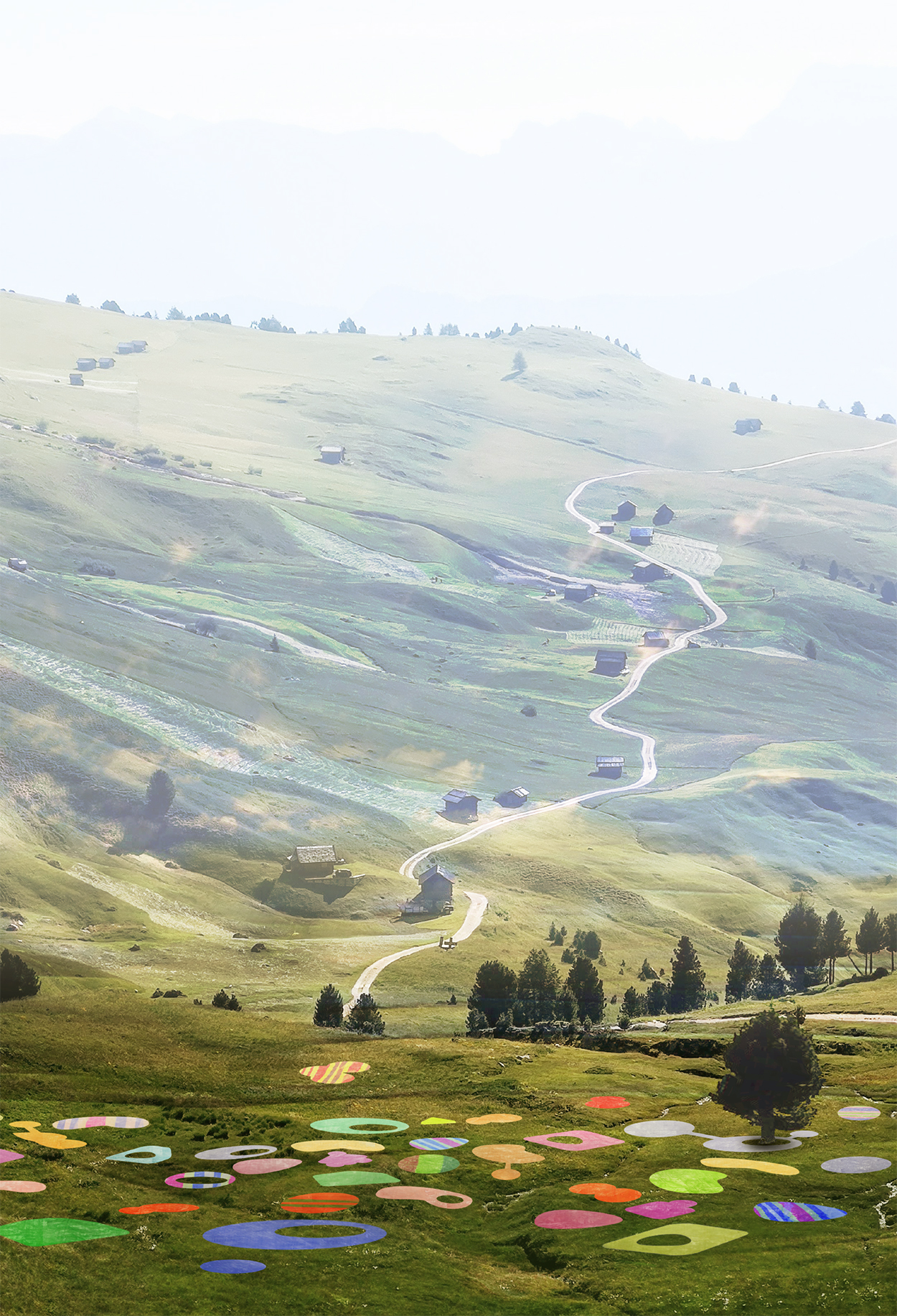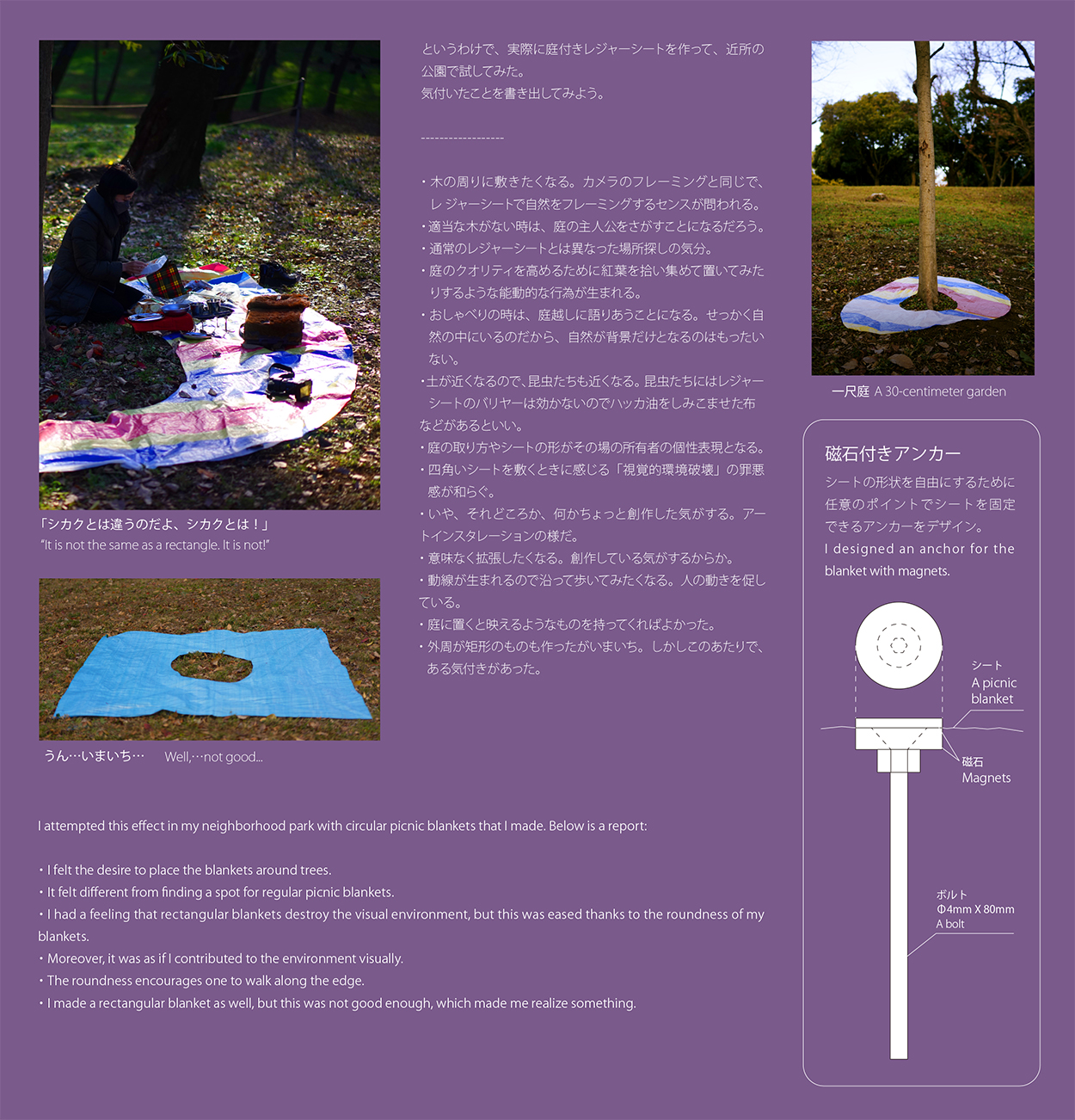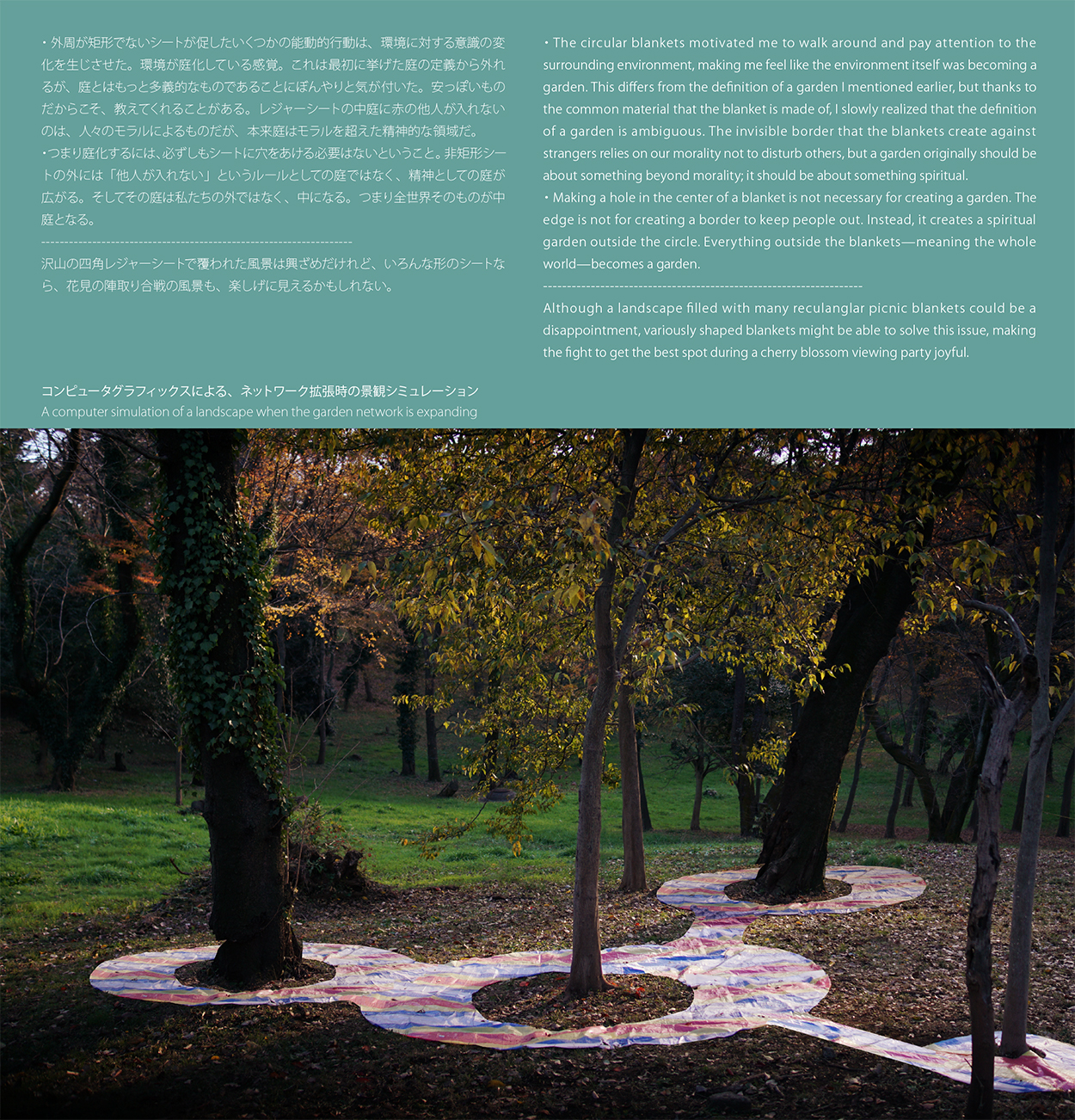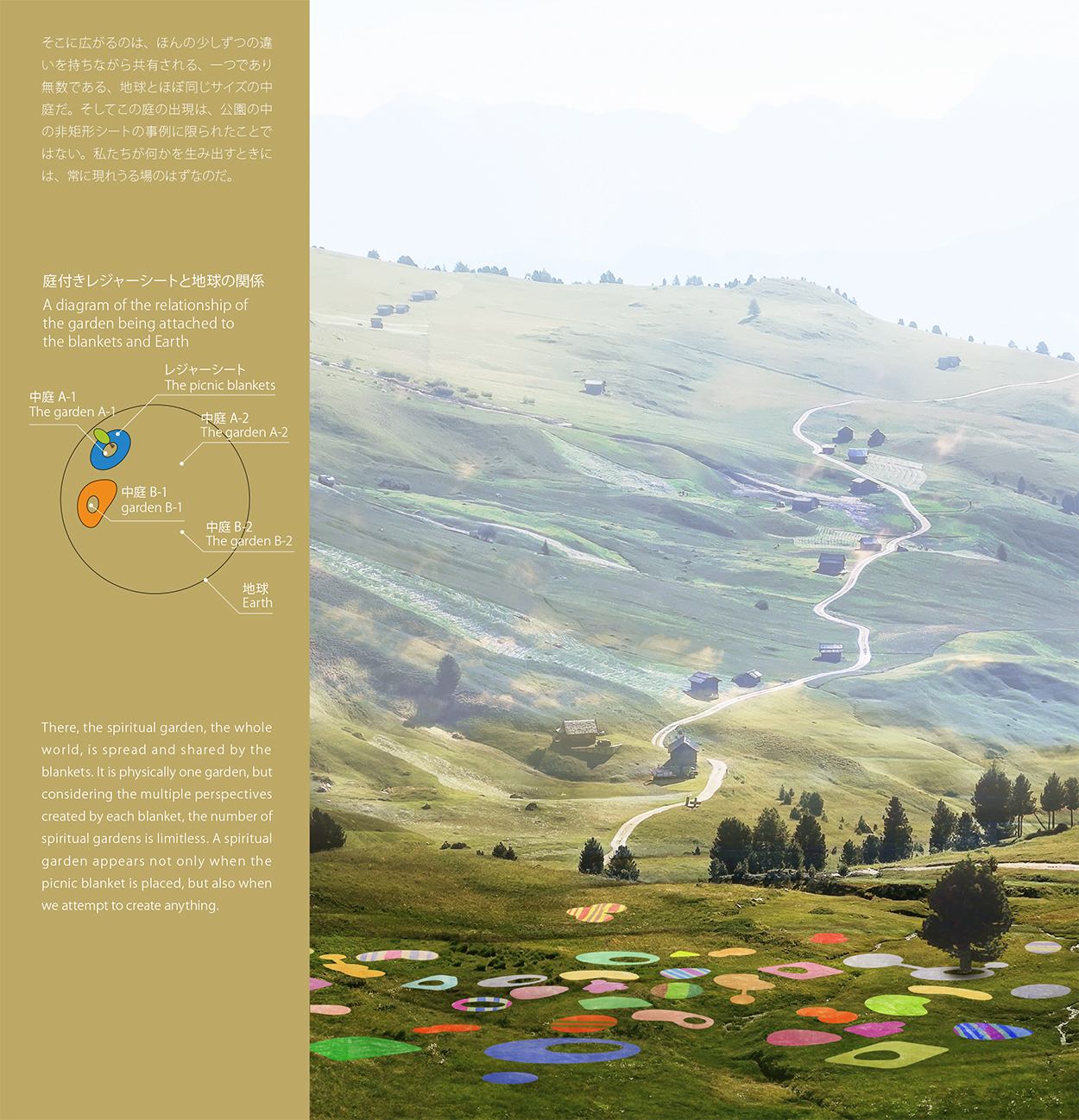構築4グラフィック:ニワカニワ
小阪淳
Niwakaniwa: Improvised GardensJun Kosaka
构筑4的图形:即兴之庭
庭ってどういう場所だろう。土とか植物とかあるイメージ。でも人の手が加えられている。多くは人が入ることができる。けれど、誰でも入れるわけではなさそう。自由に入ることができれば公園になってしまう。何らかの形でその場へのアクセスがコントロールされているイメージ。
では、公共の場を庭化するにはどうすればいいか。アクセスを制限する状況を作ればいい。都合いいことに、誰もが入れるはずの公共の場で侵入を私的にコントロールできる装置がある。「レジャーシート」だ。
コロナ禍で見られなくなった光景だが、花見の時期には、桜の名所で我さきにとレジャーシートを敷いて、つかの間の、場の個人所有を主張していた。この個人所有主張装置で任意の場を囲めば、そこは庭になるはず。選ばれたものしか入ることのできないプライベートな自然=庭を、公共の場の中に作ることができる。
そこで、実際に庭付きレジャーシートを作って、近所の公園で試してみた。
What kind of place is a garden? There is soil and vegetation, modified by human hands. Many gardens are accessible, but not open to everyone, which is the difference between a garden and a park. So, a garden is a place that regulates who walks in. Then, what should we do to transform a public space into a garden? Simply, we should regulate the passage into the space. Luckily, here we have a device that creates a border that prevents people from having easy access to the space: picnic blankets.
Sadly, due to the pandemic, we haven’t seen them for a while, but it is common to use picnic blankets to keep and indicate your own territory for cherry blossom viewing in spring. It’s so common that at popular viewing areas people strive to be the first in place to get the best viewing spot. I believe it is possible to turn public space into a garden, which is basically a private nature space that only selected people are allowed to step into, if I use picnic blankets to surround a certain area. I attempted this effect in my neighborhood park with circular picnic blankets that I made.
(Translation by Mimu Sakuma)
[2022.5.6 UPDATE]





【Issue vol.1】
構築4グラフィックス:ディアスポラのかたち/The Shape of Diaspora and Building Mode 4/构筑4的图形
【Issue vol.2】
構築4グラフィックス:土派/Soilism/土派
【Issue vol.3】
構築4グラフィックス:鉄図/The Big Guide to Iron/铁图
協賛/SUPPORT サントリー文化財団(2020年度)、一般財団法人窓研究所 WINDOW RESEARCH INSTITUTE(2019〜2021年度)、公益財団法人ユニオン造形財団(2022年度〜)



